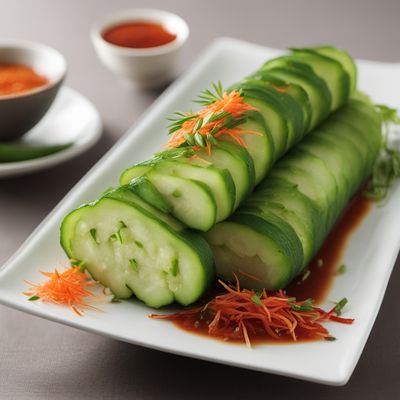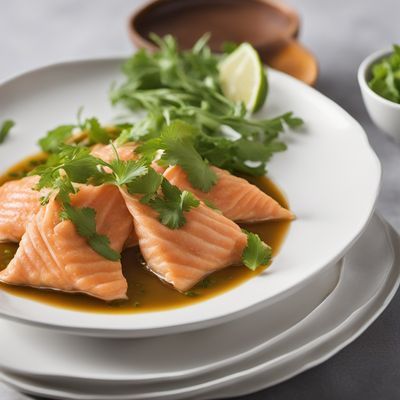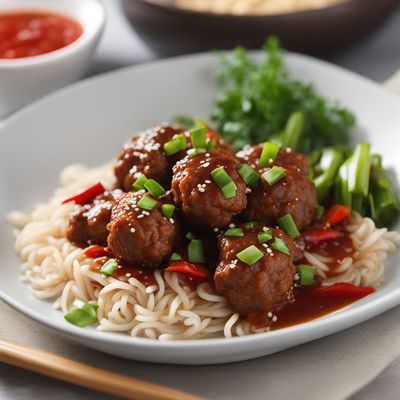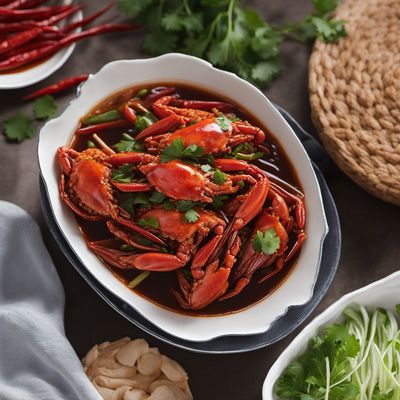
Ingredient
Spring onions
The Versatile Allium
Spring onions are characterized by their long, slender green stalks and small white bulbs. They have a milder flavor compared to regular onions, making them suitable for raw consumption as well as cooking. The green tops of spring onions are often used as a garnish or added to salads for a pop of color and flavor.
Origins and history
Spring onions have been cultivated and used in various cuisines for centuries. They are believed to have originated in Asia and have since spread to different parts of the world. In many cultures, spring onions symbolize renewal and are associated with the arrival of spring.
Nutritional information
Spring onions are low in calories and a good source of vitamins A and C. They also contain fiber and antioxidants, which contribute to overall health and well-being.
Allergens
Individuals with onion allergies may also be allergic to spring onions, as they belong to the same family. It is important to exercise caution and consult with a healthcare professional if you have known onion allergies.
How to select
When selecting spring onions, look for ones with firm, crisp stalks and fresh green tops. Avoid any that appear wilted, slimy, or have discolored bulbs. The green tops should be vibrant and free from yellowing or browning.
Storage recommendations
To keep spring onions fresh, trim the roots and store them in the refrigerator. Place them in a plastic bag or wrap them in a damp paper towel to maintain moisture. They can be stored for up to a week.
How to produce
Spring onions can be easily grown in home gardens or containers. They require well-drained soil and regular watering. Plant the bulbs in early spring or fall, and they will be ready for harvest within a few months. Regular trimming of the green tops promotes continuous growth.
Preparation tips
Spring onions can be used in a variety of dishes, including stir-fries, soups, salads, and omelets. They can be used as a garnish or added to salsas, dips, and marinades for an extra layer of flavor. The green tops can be chopped and sprinkled over finished dishes to add a fresh and vibrant touch.
Substitutions
Green onions can be used as a substitute for spring onions, as they offer a similar mild onion flavor. Chives can also be used as a substitute, although they have a milder taste compared to spring onions.
Culinary uses
Spring onions are widely used in Asian cuisines, particularly in dishes like stir-fries, noodle soups, and dumplings. They are also commonly used in Mexican, Mediterranean, and Middle Eastern cuisines. Spring onions are readily available in most grocery stores and farmers markets.
More ingredients from this category
Recipes using Spring onions » Browse all

Aushak - Afghan Dumplings with Yogurt and Tomato Sauce
Savor the Delight: Afghan Aushak - Heavenly Dumplings in Tangy Tomato Sauce

Stuffed Cucumber Kimchi
Crisp and Tangy Cucumber Kimchi Delight

Thai Crab Omelette
Savory Delight: Thai Crab Omelette - A Fusion of Flavors

Caribbean Chinese Style Coconut Rice
Tropical Coconut Rice Delight

Japanese-Style Ttoro
Umami Delight: Japanese-Style Ttoro with Fresh Seafood

Chifa-style Salmon Ravioli
Peruvian Fusion: Chifa-inspired Salmon Ravioli with a Twist

Gyeran-ppang (Korean Egg Bread)
Savory Egg-Stuffed Bread: A Korean Delight

Chinese American Style Creamy Meatballs
Silky Meatballs in Creamy Chinese American Sauce

Puerto Rican Style Ramen
Caribbean Fusion Ramen: A Taste of Puerto Rico in a Bowl

Guizhou-style Spicy Crab
Fiery Crab Delight: A Guizhou Culinary Adventure

Silesian-style Smoked Salmon Salad
Smoked Salmon Delight: A Silesian Twist on a Classic Dish

Chinese-style Focaccia
Sesame-infused Focaccia with Scallions
